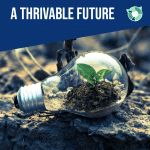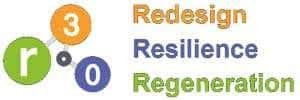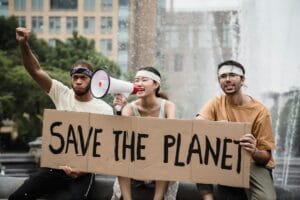The False Choice: Why climate Mitigation and Adaptation Are Not Either/Or
Climate mitigation and adaptation are often framed as the two dominant pillars of climate response. Mitigation aims to reduce greenhouse gas emissions to slow future climate change. Adaptation seeks to cope with the disruptions that are already occurring. These strategies are interdependent; neither is sufficient alone (Devi & Salam, 2025).
Framing these strategies as either/or leads to ineffective and often harmful results. Adaptation without mitigation ensures that the problem keeps growing. Mitigation without adaptation leaves people defenceless against a destabilising present (Behsudi, 2021).
But this framing conceals a deeper issue. Both mitigation and adaptation are post-harm responses. Mitigation reduces future damage but cannot undo the emissions already in the atmosphere. Adaptation helps manage impacts but accepts that harm is already unfolding. Both strategies treat climate change as a problem to manage, not a condition to prevent or transform.
This raises a fundamental question:
Is managing climate harm the best aim, or can climate response become truly regenerative, even preventive?

Source: Atiar Ahmed on Unsplash, May 21, 2023
What climate Mitigation and Adaptation Actually Mean—And Why They Must Work Together
Climate mitigation involves interventions such as renewable energy deployment, carbon removal technologies, and land use changes that directly reduce the sources of emissions. Climate adaptation includes measures like strengthening flood defenses, drought-resistant agriculture, and emergency response systems that enable communities to cope with current and near-future climate shocks (Soni & Singh, 2025).
The Deep Adaptation framework, co-developed by Professor Jem Bendell, recognises that disruption is already happening. Mitigation and adaptation are linked by shared timelines and feedback loops. The framework emphasises that, although restoring the climate to its pre-industrial state may not be possible, these actions still contribute to building a more sustainable and livable world (Bendell & Read, 2021).
Mitigation shrinks the scale of future risk. Adaptation builds the capacity to survive what is already happening. Both strategies are linked by feedback loops, shared investments, and overlapping time horizons (Monios et al., 2024). But neither addresses the root drivers of the crisis: extractive economies, ecological overshoot, and consumption patterns tied to global inequality (Harvey, 2022). Mitigation is not prevention; adaptation is normalisation of harm. Both strategies operate under the assumption that modern life (urbanised, materialised, energy-intensive) can continue with adjustments, not transformation (Castro & Sen, 2022).
This dynamic underscores the need to approach climate change as a Complex Wicked Problem, a Foundational Focus Factor of the THRIVE Framework, characterised by interdependent causes, no definitive solutions, and the necessity for flexible, adaptive, and cross-sectoral strategies.
Lessons from Failure: When One-Sided Approaches Fall Short in Climate Resilience Breakdown
Several high-profile failures illustrate the consequences of pursuing only one pillar of climate response:
- New Orleans (2005): Weak adaptation infrastructure led to catastrophic flooding during Hurricane Katrina, despite decades of climate science awareness. The disaster revealed how low resilience magnifies vulnerability, even when emissions are being reduced globally (Short, 2021).
- Germany (2021): Progressive emissions policies did not prevent loss of life during the Ahr Valley floods. Without adequate local adaptation, intense, localised rainfall overwhelmed the benefits of mitigation efforts (Martens, 2024).
- Pakistan (2022): The country’s adaptation plans were overwhelmed by climate-induced flooding, exacerbated by a global mitigation gap. The result was a humanitarian crisis affecting over 30 million people (Khan & Zahidi, 2024).
Each failure exposes the limitations of climate strategies that ignore either prevention or preparation. Disasters hit hardest when mitigation efforts fail and adaptation measures cannot withstand the pressure.
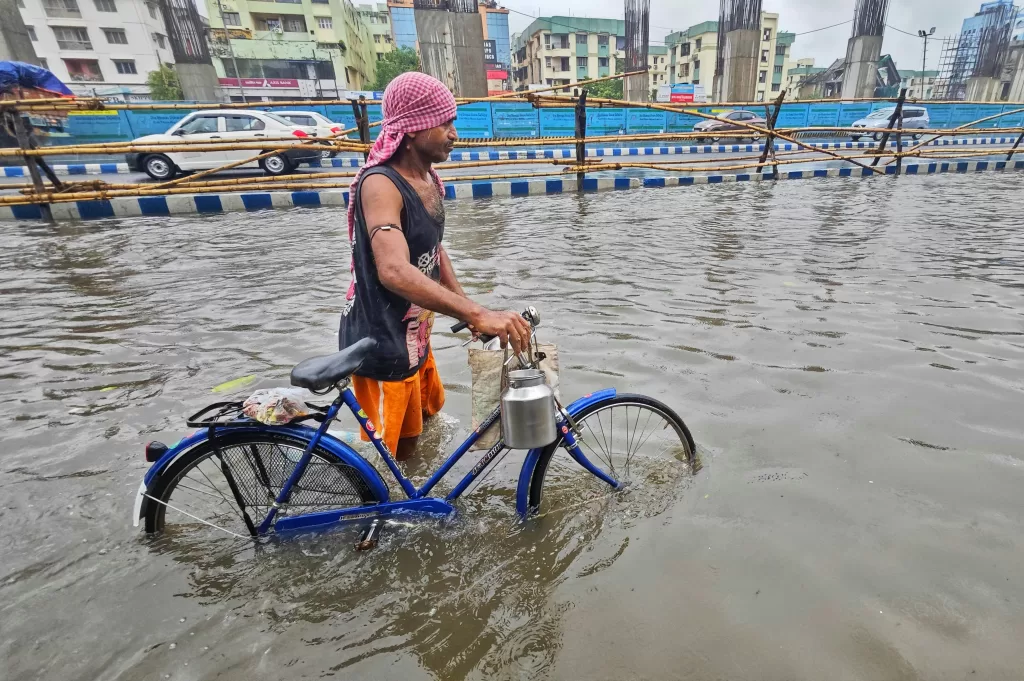
Source: Dibakar Roy on Unsplash, June 12, 2024
Sector Spotlight: Integrating climate Mitigation and Adaptation in Practice
Urban Planning: Co-Benefits in Concrete and Canopy for Resilient Systems
Urban centres are responsible for 70% of global emissions, and also house the majority of people exposed to climate hazards (Wang et al., 2021). Integrated planning can reduce both exposure and emissions:
- Green infrastructure, such as bioswales and green roofs, absorbs rainfall and cools temperatures (adaptation) while cutting building energy demand (mitigation) (Ikeobilor, 2021).
- Mass transit investments lower emissions and improve mobility during extreme weather disruptions (Abdallah, 2023).
- Nature-based solutions, such as reforestation in peri-urban zones, reduce flood risk and increase carbon sinks (Soto-Montes-de-Oca et al., 2023).
Urban planners must embed mitigation and adaptation into zoning, design, finance, and governance instead of treating them in silos. This demands a shift to Systems Thinking, a Foundational Focus Factor of the THRIVE Framework, which recognises the interconnections across ecological, technological, and social systems. Planning cities in silos cannot address cascading climate impacts effectively.
Agriculture: Food Resilient Systems for a Warming World
Agriculture must evolve from carbon-efficient to ecologically regenerative. While climate-smart irrigation and crop diversification support adaptation, they must align with Strong Sustainability principles: soil must regenerate, biodiversity must return, and food systems must localise. Prevention happens when farming nourishes both people and planet (Karri & Nalluri, 2023).
- Agroecology, which emphasises biodiversity, improves soil health and yields under uncertain climate conditions (adaptation), while sequestering carbon (mitigation) (Vikas & Ranjan, 2024).
- Climate-smart irrigation systems reduce water use and methane emissions (Bwire et al., 2024).
- Crop diversification enhances resilience to weather variability while reducing input-related emissions (Singh et al., 2025).
Mitigation-only approaches, such as net-zero fertiliser offsets, may reduce emissions on paper but fail to safeguard food production in the face of increasingly erratic climate conditions. Conversely, adaptation-only programmes often focus on short-term survival, maintaining practices that continue to degrade ecosystems and drive emissions. Only a system-level redesign that transforms how communities grow, distribute, and value food can ensure long-term resilience and sustainability in agriculture (Olarewaju et al., 2025). To overcome this, the THRIVE Framework’s Foundational Focus Factor Strong Sustainability should be applied, as it upholds the non-substitutable value of natural systems and rejects the notion that technological or economic capital can compensate for ecological degradation.
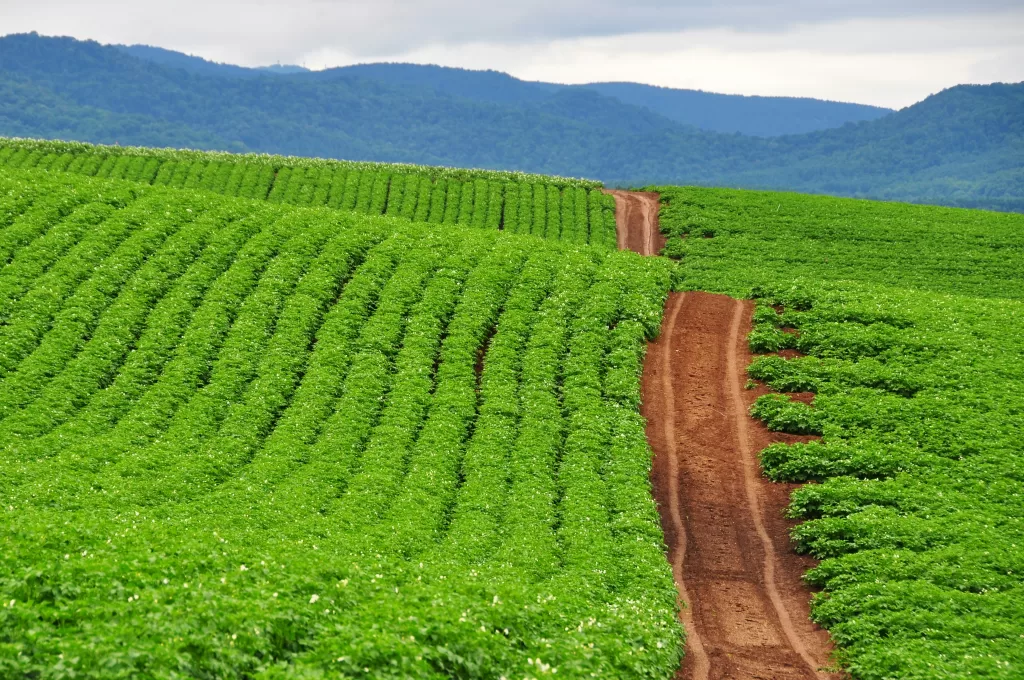
Source: Henry Lim on Unsplash, October 7, 2023
Infrastructure: From Concrete to Climate-Conscious
Climate-ready infrastructure must not merely endure shocks; it must reverse ecological damage. Building codes should integrate nature-positive metrics, powered by Values-Based Innovation and Context-Based Metrics. Resilience should be embedded in form, function, and community use, not added as an afterthought (Singh et al., 2023):
- Low-carbon building materials, such as cross-laminated timber, reduce embodied emissions and improve temperature regulation (Kang et al., 2024).
- Elevated transport corridors maintain access during floods and reduce damage costs, supporting climate-resilient infrastructure (Mushtaq et al., 2024).
- Decentralised energy systems protect against grid failure during climate events and cut reliance on fossil fuels (Hanna & Marqusee, 2022).
Only by embedding climate mitigation and adaptation into infrastructure codes, standards, and procurement can societies avoid lock-in to high-risk, high-carbon futures (Scott et al., 2022).
The Cost of Division: Why Climate Policy Integration Is Economically and Ecologically Smarter
The economic case for integrated action is clear. The World Resources Institute (WRI) estimates that $1 invested in resilience yields $10 in economic returns through avoided losses and productivity gains (WRI, 2025). Meanwhile, climate-induced disasters already cost hundreds of billions annually, costs that mitigation can prevent and adaptation can soften.
Segregated approaches waste resources and expose gaps. For example:
- Carbon pricing without resilience planning can drive inequality and social unrest (Känzig, 2025).
- Hard infrastructure built without climate forecasting becomes obsolete quickly (OECD, 2024).
- Climate adaptation funds, if not aligned with emissions planning, may unintentionally reinforce carbon-intensive systems (OECD, 2024).
Integrated strategies leverage co-benefits, avoid duplication, and enhance public trust. Climate risk management becomes a proactive, rather than reactive, endeavour (Tahmasebi, 2024).
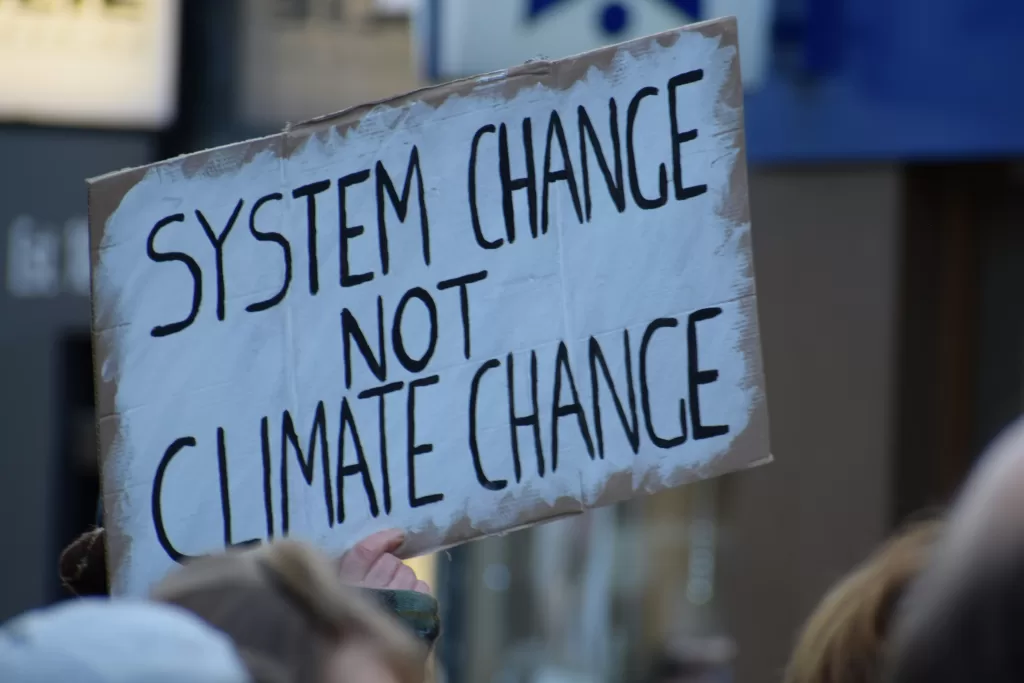
Source: Ma Ti on Unsplash, September 18, 2020
Toward Holistic Climate Action: Policy, Investment, and Systemic Change
Achieving an effective climate response requires more than isolated projects; it demands systemic transformation. Policies must align mitigation and adaptation through integrated planning, long-term investment, and cross-sector governance. Policymakers must embed climate resilience into every development decision from national budgets to local zoning (Pervin et al., 2022).
Frameworks like THRIVE and Deep Adaptation emphasise that climate action must address not just emissions and impacts, but also equity, psychological readiness, and ecological regeneration. This means shifting away from reactive, siloed strategies toward anticipatory, inclusive, and regenerative models of development. Climate action must become a unifying agenda, connecting infrastructure, food systems, finance, and culture under a shared vision of thrivability within planetary boundaries (Gopal & Pitts, 2025).
Conclusion and Call to Action Beyond Climate Mitigation vs Adaptation
Climate mitigation and adaptation remain necessary. But they are not enough for the world that is emerging. As the polycrisis deepens, reactive strategies alone cannot secure a livable future. While mitigation reduces future harm and adaptation strengthens resilience to current shocks, both act after damage has already occurred. Mitigation alone cannot reverse decades of atmospheric accumulation. Adaptation alone cannot prevent cascading system failures. Both strategies accept harm as a given, either to be reduced or endured. In a world defined by excessive consumption, rapid urban growth, and ecological overshoot, accepting harm as inevitable is no longer adequate.
Regenerative prevention, grounded in THRIVE’s Foundational Focus Factors, offers a more transformative path that respects planetary boundaries, reclaims ethical innovation, and reorients climate action from crisis response to life-centred design. The transformation does not require abandoning technological progress. Instead, it calls for redirecting innovation toward outcomes that regenerate ecosystems, strengthen communities, and reduce structural vulnerabilities.
Frameworks like THRIVE provide the tools, direction, and shared language to move from fragmented responses toward integrated, systemic solutions. They help shift climate action from surviving the present to enabling the future.
Now is the time to act.
Rethink development models. Integrate Systems Thinking into planning. Prioritise prevention over reaction. Design infrastructure, economies, and food systems that regenerate rather than deplete. Shift from sustaining what exists to enabling what could flourish. Support policies, research, and innovations that heal, not just protect.
Champion communities, institutions, and frameworks that go beyond sustainability.
Demand a future that thrives, not just survives.
Achieving THRIVE goals
Several of the United Nations’ Sustainable Development Goals (SDGs) recognise the urgency of climate change. SDG13: Climate Action calls for immediate efforts to combat climate change and its impacts. SDG2: Zero Hunger and SDG11: Sustainable Cities and Communities similarly highlight the importance of food security and urban resilience. Both areas are highly vulnerable to climate stress. Yet, despite their ambition, the SDGs have often been critiqued for promoting a fragmented, technocratic approach to sustainability. They assume economic growth and environmental protection can advance together without addressing systemic contradictions. Their targets are frequently treated as fixed endpoints rather than evolving processes. This can lead to trade-offs rather than synergies, especially when climate action is decoupled from structural reform.
The THRIVE Framework addresses these gaps by grounding its approach in Foundational Focus Factors (FFFs) that reflect the interconnected, dynamic, and ethically grounded nature of climate reality. Through holistic goals such as Infrastructure: Thrivable Living, Climate Action: Mitigation & Adaptation, and Globalisation: Smart Communities, THRIVE translates these Foundational Focus Factors into concrete, actionable pathways for systemic and regenerative change. These goals are not merely about minimising harm but about regenerating planetary systems, integrating ecological, social, and ethical dimensions into every goal, going beyond sustaining a broken system to transforming it.
A Thrivable Framework
The THRIVE Framework offers a powerful structure for developing a regenerative prevention paradigm. Unlike conventional approaches focused on sustaining or adapting the current system, THRIVE supports systemic change grounded in regeneration and ethical innovation. It recognises that climate change is a Complex Wicked Problem with no single solution and high potential for unintended consequences, requiring flexible, cross-sectoral responses.
Through Systems Thinking, mitigation and adaptation efforts are connected across infrastructure, agriculture, and social systems, avoiding the pitfalls of siloed climate strategies. At its core, Strong Sustainability insists that natural systems cannot be replaced by economic or technological capital, demanding climate responses that respect ecological limits and prioritise regeneration over compensation.
The THRIVE Project provides a comprehensive suite of resources to support climate-conscious and regenerative transformation. These include articles exploring current challenges, a monthly newsletter with curated insights, in-depth whitepapers grounded in research, and expert-led webinars that foster dialogue on systemic solutions. Hands-on workshops offer practical tools and guidance for applying THRIVE’s principles in real-world contexts.





